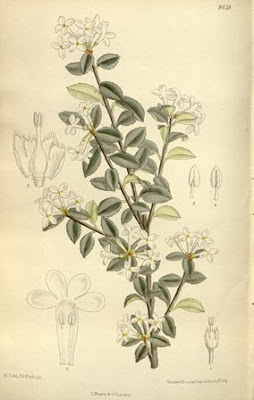2.8. Cotyledon = embryonic leaf, or placental lobe
Religious or folk tales and heavy-handed symbolism aside (forbidden fruit, Snow White, One Tree Hunahpu), human mothers are like plants in many literal and practical ways.
They have ovaries, petals of sorts, and buds.
They each have special vascular systems for transporting the fluid that supplies gases and nutrients necessary for life.
They respond to seasons and have cycles. They are part of larger life cycles, and take part in a grand, ecological cycle as well.
They have cotyledons. Human cotyledons are plump, vascular lobes of maternal placenta. Plant cotyledons, two green halves of a split pea or edamame, are the food their mothers packed them so they could eat and grow.
Like plants making our atmosphere habitable and magically creating sugar out of simple ingredients, through the placenta mothers supply O2 and glucose for baby to use and help get rid of baby's CO2 and waste products.
They need water to live and function.
They are endlessly resilient at every stage of life, but particularly so when reproduction's involved.
They can grow their seed inside their bodies.
They are made of tiny cells, each equipped with unique organelles (tiny organs). Their bodies have organs (roots, stems, leaves, hearts, livers, kidneys...) too.
They are made of many of the same elements: carbon, hydrogen, oxygen, and nitrogen.
They, and everything else on earth, are all made of atoms, then at an even tinier level, protons, neutrons, electrons, and lots of negative space.
They have ovaries, petals of sorts, and buds.
They each have special vascular systems for transporting the fluid that supplies gases and nutrients necessary for life.
They respond to seasons and have cycles. They are part of larger life cycles, and take part in a grand, ecological cycle as well.
They have cotyledons. Human cotyledons are plump, vascular lobes of maternal placenta. Plant cotyledons, two green halves of a split pea or edamame, are the food their mothers packed them so they could eat and grow.
Like plants making our atmosphere habitable and magically creating sugar out of simple ingredients, through the placenta mothers supply O2 and glucose for baby to use and help get rid of baby's CO2 and waste products.
They need water to live and function.
They are endlessly resilient at every stage of life, but particularly so when reproduction's involved.
They can grow their seed inside their bodies.
They are made of tiny cells, each equipped with unique organelles (tiny organs). Their bodies have organs (roots, stems, leaves, hearts, livers, kidneys...) too.
They are made of many of the same elements: carbon, hydrogen, oxygen, and nitrogen.
They, and everything else on earth, are all made of atoms, then at an even tinier level, protons, neutrons, electrons, and lots of negative space.



Comments
Post a Comment